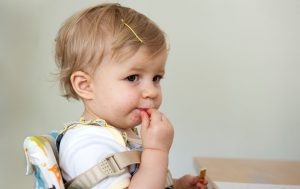Why Pacifiers Spark Debate
A small silicone nipple can calm colic in seconds—yet critics cite nipple confusion, ear infections, and dental shifts. Separating myth from evidence lets parents use pacifiers strategically: soothe baby and protect future smiles. The American Academy of Pediatrics (AAP) endorses pacifier use at sleep time to lower SIDS risk in the first year , but timing and hygiene matter.
Quick‑Glance Pros & Cons
| Benefit | Scientific Backing | Caution |
| Lowers SIDS by stimulating airway reflex | AAP Task Force on SIDS | Use only after breastfeeding is established (≈ 3 weeks) |
| Calms pain during shots, blood draws | Cochrane neonatal review | Pair with sucrose drops for best effect |
| Eases plane ear pressure (suck‑swallow) | Pediatric travel study | Keep extra sanitized pacifier in carry‑on |
| Risk | ||
| Slightly higher otitis media rate after 6 months | Meta‑analysis of 20 studies | Limit daytime use after 6 mo |
| Possible front‑teeth protrusion if used past 3 yrs | American Dental Assn. | Plan wean by 18–24 mo |
| Candida thrush if infrequently sterilized | NICU infection data | Boil or steam weekly |
Choosing the Right Pacifier
- One‑piece construction – no cracks for bacteria.
- Vent holes – reduce skin rash and allow airflow.
- Orthodontic shape – flat bottom, rounded top supports palate alignment.
- Shield diameter ≥ 1.5 in – prevents choking if baby works nipple loose.
Skip pacifiers attached to plush toys until baby can roll both ways—stuffed animals raise suffocation risk.
Hygiene How‑To
| Age | Cleaning Method | Frequency |
| 0–6 mo | Boil 5 min or use microwave steam bag | Daily |
| 6–12 mo | Hot soapy water rinse | Daily, plus weekly boil |
| 12 mo+ | Dishwasher top rack | Every few days |
Replace pacifiers every 4–6 weeks or at first sign of cracks. Never “clean” by popping it in your own mouth—adult saliva transmits cavity‑causing Streptococcus mutans.
Timing With Breastfeeding
The WHO warns against early pacifier introduction in hospitals, but controlled U.S. trials show no significant drop in breastfeeding success when pacifiers are delayed until 3–4 weeks—after latch and supply stabilize . Tips:
- Offer breast first when baby shows hunger cues (rooting, smacking).
- Use pacifier for non‑nutritive sucking only (post‑feed drowsy phase).
- If milk supply dips, pause pacifier use for three days to boost demand cycle.
Safe Use Rules
- Clip safely – use short, break‑away ribbon; never tie to crib or neck.
- No sweet dips – honey risks infant botulism; sugar worsens early caries.
- Night glow – keep glow‑in‑the‑dark pacifier in crib corner so baby self‑finds at 3 a.m.
Weaning Roadmap: 4‑Week Plan
| Week | Goal | Tactics |
| 1 | Limit to naps & night | Remove during play; replace with teether |
| 2 | Shorten night use | Pull pacifier once baby falls asleep |
| 3 | Introduce comfort object | Soft breathable lovey (no buttons) |
| 4 | Zero pacifier | Last night “Pacifier Fairy” swaps for sticker book |
Success rate climbs to 85 percent when parents stay consistent three nights in a row .
Dental Dos & Don’ts
- Do pick orthodontic style for even palate pressure.
- Don’t dip in juice; acid + sugar erode enamel buds.
- Do schedule first dental check at 12 months—earlier if pacifier use heavy.
Front open bite risk remains low when weaning by 18 months.
Common Myths—Debunked
Myth 1: “Pacifiers always cause nipple confusion.”
Studies show confusion mainly arises when babies are offered bottle nipples before breastfeeding is established—not pacifiers introduced after three weeks.
Myth 2: “Using a pacifier means baby isn’t getting enough milk.”
Growth charts and diaper counts—not soothing tools—determine intake.
Myth 3: “Cutting the tip slowly weans without tears.”
Snipped nipples can split and pose choking hazards; safer to replace with smaller, firmer pacifier during taper week.
Sample 24‑Hour Pacifier Log (4‑Week‑Old)
| Time | Use | Trigger | Action |
| 2 a.m. | 5 min | Post‑feed drowsy | Allowed |
| 6 a.m. | 0 | Hunger cues | Breast instead |
| 9 a.m. | 10 min | Fussy diaper change | Allowed |
| Noon | 0 | Awake play | Redirect with rattle |
| 3 p.m. | 8 min | Car ride | Allowed |
| 8 p.m. | 15 min | Witching hour | Swaddle + pacifier |
Bring log to well‑baby visit; patterns guide weaning timeline.
External Resources for Deeper Guidance
- AAP HealthyChildren Pacifier FAQ – safe‑use and SIDS data.
- La Leche League Pacifier & Breastfeeding Article – latch protection tips.
Both open in new tabs so you can keep this blog handy.
Soothing Without Silicone: Backup Techniques
- Skin‑to‑skin carry—shirtless cuddle resets heart‑rate sync.
- 5‑S’s combo—swaddle, side/stomach hold, shush, sway, suck (pacifier optional).
- Low‑pitch hum—matches womb frequencies; phones on airplane mode make good shushers.
Rotate methods to prevent over‑reliance on any single soothing cue.
Review Checklist Before Your Next Appointment
- Chosen pacifier meets one‑piece/vent criteria
- Breastfeeding established ≥ 3 weeks
- Cleaning schedule posted
- Weaning age target set (18 mo)
Snap a photo and bring questions—your pediatrician can tailor advice to reflux, ear‑infection history, or dental concerns.
Ready to Personalize Your Plan?
Discuss pacifier plans at next visit—our team will evaluate latch quality, ear‑risk factors, and create a custom weaning chart.







